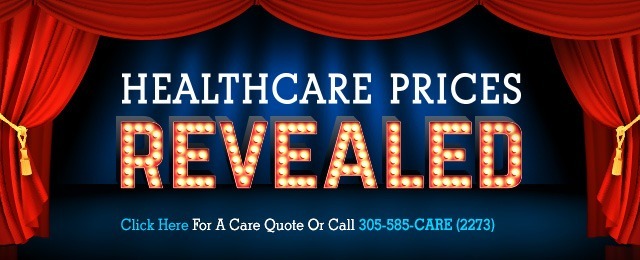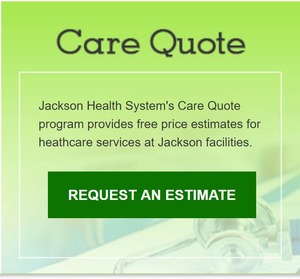It’s a Buyer’s Market: What Health Systems Should Know About Cost Transparency
// By Lisa D. Ellis //

Daniel Weinbach, president and CEO of Weinbach Group; Richard Klass, co-founder of KCI Partners; and Justin Irizarry, co-founder and CFO of OrthoNOW
You probably wouldn’t buy an appliance or book a cruise without knowing what it will cost. Yet historically, health care systems have expected patients to undergo various diagnostic tests, procedures, and treatments without any idea of what they will be charged. But times are changing quickly.
Today, as consumers become responsible for increasingly larger portions of their health care costs, some are reducing their consumption of medical services in an effort to contain the financial impact. While most are not yet comparison-shopping based on cost, this is expected to change in the future. This could mean they’ll be willing to move their business to health systems that disclose what various services cost. As a result, not sharing your pricing upfront could end up costing you much.
Rocky Landscape
As a health care marketer, this may leave you wondering how you can best help your organization navigate transparency and health care consumerism. Your organization may also feel pressure to compete by slashing prices and undercutting competitors. But such strategies likely will backfire. A more effective approach is to create a value proposition that enables people to feel comfortable giving you their business. After all, most consumers see high-quality care as well worth the cost. Therefore, savvy marketers should take steps to differentiate their organization’s services to attract more people.
This was the message at a session of the recent 2017 SHSMD annual conference presented by Daniel Weinbach, president and CEO of Weinbach Group, Inc.; Richard Klass, co-founder of KCI Partners, Inc.; and Justin Irizarry, co-founder and CFO of OrthoNOW, LLC (an urgent care group specifically for orthopedic injuries, with locations in South Florida, Georgia, and Michigan). They focused on the need for transparency, and encouraged marketers to lead their organizations in this area through the rapidly changing health care world.
The Confusing World of Health Care Costs
While the idea of transparency may sound simple, most health care professionals know that it’s anything but. In fact, being transparent about price is much more complicated—and confusing—in medical services than sharing a price list for a restaurant or beauty parlor, and the reasons are manifold.
“To my knowledge [a major reason is that] health care is the only market where the consumer using the service is not the one paying for it, and where the provider might not know what he or she is being paid [for the service],” explains Irizarry. “The patient goes to a facility, pays a co-pay, receives a service, gets care, and the provider submits a claim to the insurer,” he says. Then the insurer might pay part of the cost, but the patient may still be responsible for the co-insurance (a percentage of the allowable amount that the individual pays for different categories of services). Different insurance plans, and levels of plans, have different contracted rates, and the rate varies not only by payer but also by physician, location, facility, and line of service,” he says.
Further complicating matters is that pricing is different depending on who pays. “When you look at defining the price of a service, there’s a wonderful thing called a charge master, which is a list price of services,” he says. “It’s usually a multiplier of what is allowed by Medicare. This is an amount that is rarely ever collected by a provider.”
All of this translates into a very wide spread of pricing for the same procedure—in South Florida, it can be as much as plus or minus 800 percent, Irizarry says. Such variation and confusion can leave patients frustrated, and this uncertainty can impact a facility’s patient satisfaction ratings. Further muddying the waters is that some efforts to publish health care pricing over the past few years have fallen flat—often because consumers don’t understand all of the jargon and find the whole topic overwhelming. Nonetheless, Irizarry, Weinbach, and Klass all agree that customers expect transparency, and organizations that don’t address pricing will be left in the dust.
Using Price Transparency as a Positioning Strategy
“Pricing transparency will need to be part of an overall positioning strategy that underscores each institution’s value proposition. It will also be different based on populations you serve and core strengths and weakness,” Klass says.
When exploring how to implement an effective price strategy that works for your organization, the presenters say that it’s important to remember that not all services are “shoppable,” so you can work with decision-makers in your organization to help decide which lines to focus on and determine what your customers care about and how—and when—they shop.
For instance, if a patient has a heart attack, he or she will go to the nearest emergency department and won’t call around to find the least expensive services. But for “shoppable procedures” such as a colonoscopy or diagnostic imaging, and for optional surgeries like hip and knee replacements, patients may have time to explore what’s available and what it costs. That’s where organizations can focus on showing their value. Some people may look for convenience or familiarity with the brand, while others may be swayed by outcome data and patient testimonials to justify selecting an organization with a higher out-of-pocket price tag than a competing organization. Therefore, the best approach to market your services will depend largely on your target audience, their preferences, and your goals.
Campaign to Strategically Reveal Costs
 To illustrate how a system leverages transparency to its advantage to resonate with patients and things they care about, Weinbach suggests Jackson Health System in Miami, Florida.
To illustrate how a system leverages transparency to its advantage to resonate with patients and things they care about, Weinbach suggests Jackson Health System in Miami, Florida.
“This is a public health system that used price transparency as a positioning attribute,” he explains. With six hospitals and 2,000 beds, the system experiences 250,000-plus ER visits each year, as well as 1.2 million outpatient visits and 60,000 inpatient admissions. Forty-five percent of its patients are on Medicaid and 18 percent of the care it provides is uncompensated. This means that Jackson was struggling recently for ways to draw more people with insurance (or the means to self-pay) into the system.
“We wanted to elevate the positive perception people had of Jackson’s care, and position the organization as accessible,” Weinbach says. We also wanted to recognize residents’ real-world concerns [about what health care costs],” he says.
These goals prompted Jackson to create a novel promotional campaign based on service costs.

“The concept is ‘Health care prices revealed.’ In part, this was to depart from what was conventional in health care pricing and also in part this was [designed] to get a lot of attention,” Weinbach says. To further capture interest, one of Jackson’s billboards for the campaign had sequins on the word “Revealed” so it glittered in the sunlight to catch people’s eyes as they passed by.
The integrated campaign included television, newspaper, and digital ads. In part, the newspaper was used as a positioning exercise to demonstrate to taxpayers that their dollars are being used wisely, Weinbach says, adding that this was partly a political campaign as well as a marketing strategy.
 The campaign appealed to consumers, many of whom were curious to know more about what their health care services would cost them. There were 4,000 web visits to a price request page and 200 individual price requests from people with insurance in the first nine weeks of the campaign. “Looking at the charge master rates alone, it was in excess of $250,000 in services for the prices requested,” Weinbach says, pointing out that he does not know how many people ultimately accessed these services and, if so, what they paid. But what he does know is that the campaign “demonstrated that there was a tremendous appetite of people in the community as to what costs would be. The campaign also changed the perception of Jackson as being an innovative leader when it comes to health care pricing.”
The campaign appealed to consumers, many of whom were curious to know more about what their health care services would cost them. There were 4,000 web visits to a price request page and 200 individual price requests from people with insurance in the first nine weeks of the campaign. “Looking at the charge master rates alone, it was in excess of $250,000 in services for the prices requested,” Weinbach says, pointing out that he does not know how many people ultimately accessed these services and, if so, what they paid. But what he does know is that the campaign “demonstrated that there was a tremendous appetite of people in the community as to what costs would be. The campaign also changed the perception of Jackson as being an innovative leader when it comes to health care pricing.”
Meeting Patients’ Needs
With six locations in Florida and Georgia, OrthoNOW Orthopedic Urgent Care is another system that has taken a different approach to using price transparency to builds its system of specialized urgent care practices—but with similar results.
Irizarry points out that his organization’s strategy hinges on providing convenience to patients with orthopedic injuries when they need care (rather than when a doctor can fit them into their busy schedule), thus avoiding an ED visit, followed by waiting to see an orthopedic doctor afterward.
“We say, ‘Come to us and get your injury addressed.’ We don’t compete on cost but on value. It’s important that we define value from the perspective of the consumer, not from the practice,” Irizarry says. “Our differentiation gets to drive our price. People value time and convenience. It’s important to realize such differentiation really drives market advantage,” he adds.
Positioning on Different Attributes
So what does all this mean for marketers, and how can you position your organization for what comes next?
“On one hand, we’re really telling people price transparency is coming and to be prepared for it. On the other hand, we’re saying that price strategy isn’t a strategy and that people care about price, but they really don’t care about price. So what is the takeaway?” Weinbach asks. The message is that “we are at a pivotal moment in our health care history. This is the first time the system is coming under pressure. As those forces act on your organization, you will have to react and recognize price in some capacity—by differentiating yourself based on attributes of your organization, based on the value of services you provide.”
He says that some of the ways that organizations can differentiate themselves include focusing on:
- Outcomes
- Patient experiences
- Weekend hours or after-hours access
- Physician recommendations
- Geographical proximity
- Clinical staff training
- Premium branding
Bottom Line
“We can assure you when you are marketing bariatric surgery or hip or knee replacements, you will be asked by customers how much it costs. When you answer it, you don’t just have to answer honestly but you also have to be able to justify the cost,” he says.
Lisa D. Ellis is editor of Strategic Health Care Marketing. She is a journalist and content development specialist who helps hospitals and other health care providers and organizations shape strategic messages and communicate them to their target audiences. You can reach her at editor@strategicHCmarketing.com.

